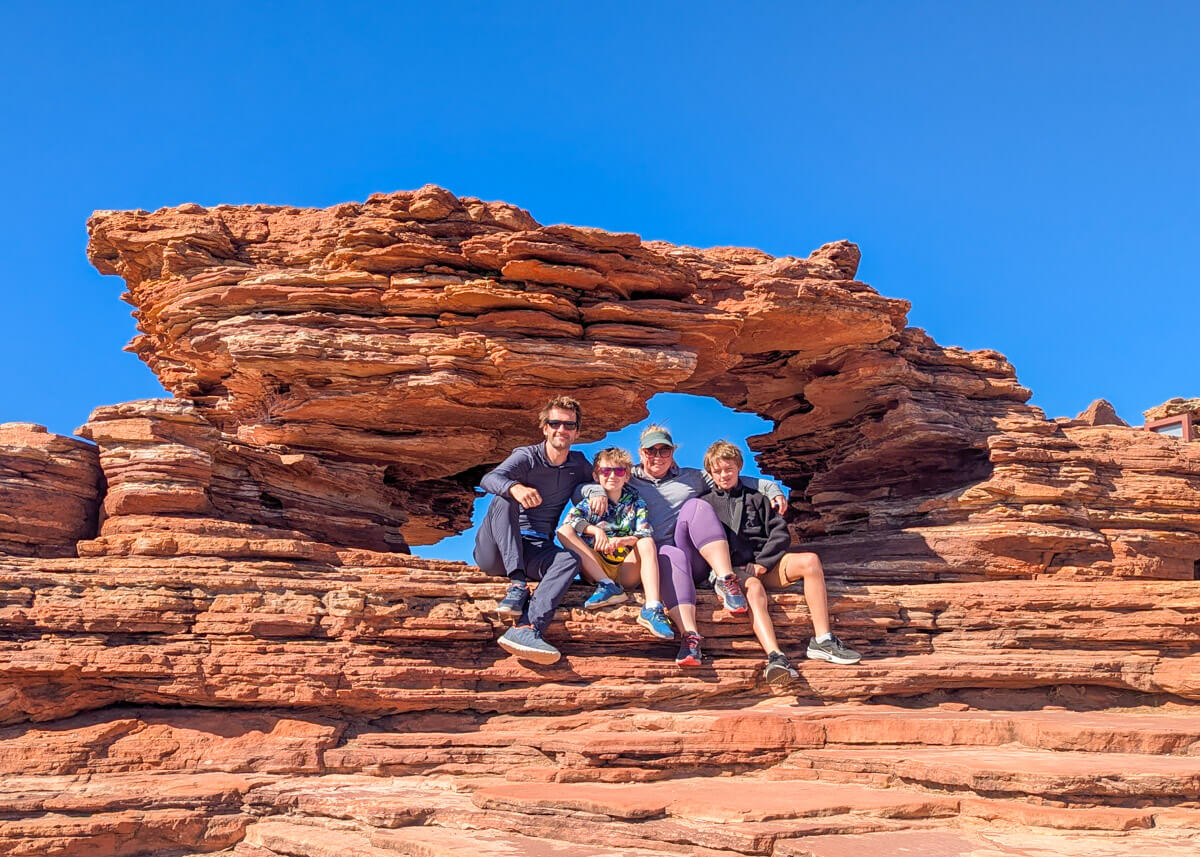Plan the ultimate adventure in Western Australia with kids; our 6-week road trip itinerary includes top family-friendly stops, essential tips, and a mix of campsites and self-catering / motel accommodation.
There’s no escaping the fact that Western Australia is a vast region and one that demands a significant amount of planning and respect. What might look like a straightforward drive on Google Maps can, in reality, be a 900km trek through largely uninhabited wilderness, with only the occasional lonely roadhouse for company. To do Western Australia justice, you really need to set aside six weeks, factor in plenty of no-driving days, and accept that you can’t do it all.
Australia is never likely to appear on a list of cheap travel destinations, with expensive accommodation, travel and tours eating into your budget. So we had to be smart with our travel plans and choose carefully where to stay and what to do. Opting for a car rental and camping in a tent, rather than renting a campervan was the biggest cost saver but there were plenty of other decisions we made along the way that helped to keep the costs down a little.
Disclaimer: This post contains affiliate links. If you click to purchase, it is at no additional cost to you, and I receive a small commission.

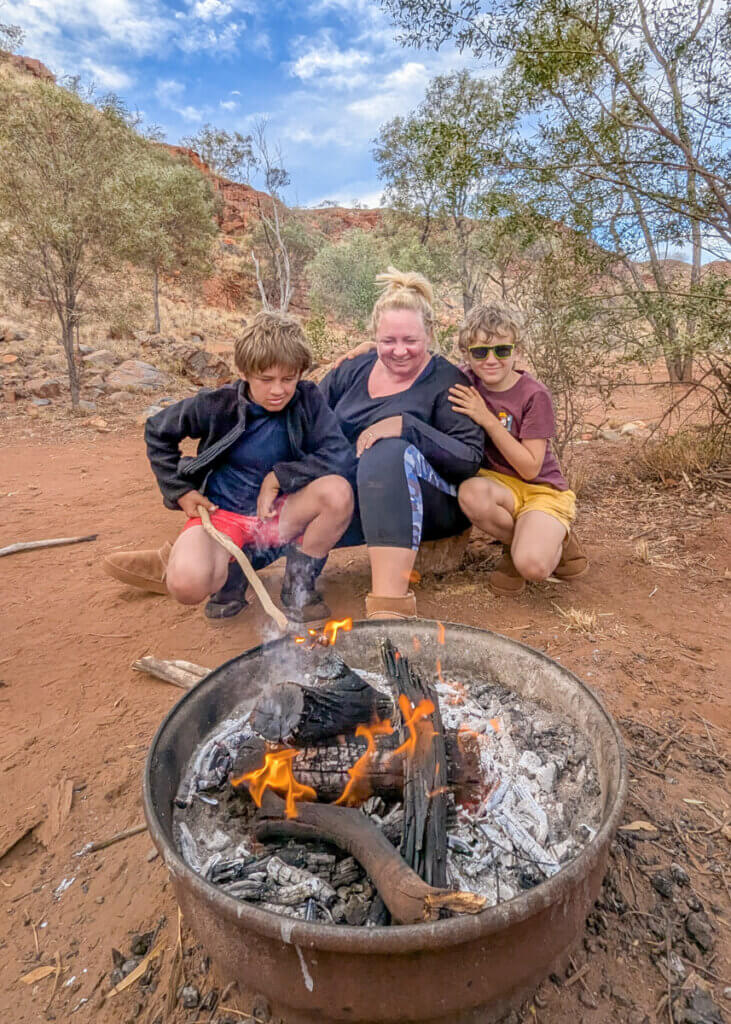
Our route
This route takes in a big loop of Western Australia, starting and ending in Perth. The first section takes you along the west coast from Margaret River up to Coral Bay, then follows a loop through the Outback down to Kargoorlie and onto Esperance on the south coast.
Looking at the map, you’ll notice that we didn’t visit Broome. We felt that this was a little too far out of the way, adding days of extra driving in the wrong direction. A stop in Broome makes more sense when travelling overland between Perth and Darwin. One-way vehicle rentals are much more expensive and we decided to start and finish at Perth.
Best time of year to road trip Western Australia
Western Australia can be one of the hottest places on the planet, so it’s important to be plan your visit accordingly. During the Australian summer (December to February), the temperatures climb so high that many campsites close and wait for the heat to pass. Driving in the Outback becomes more hazardous if you happen to experience mechanical issues, and the threat of bushfires increases.
The peak season falls during the Australian winter (June to August) when the weather is cooler, although the northern half of the state is still warm, attracting tourists in search of some winter sun. Combined with the school holidays, this time of year is always busy and you’ll find it much harder to book accommodation and tours. Do keep in mind that the nights get very cold in the middle of winter (below freezing isn’t uncommon), so camping in tents or motorhomes can be a challenge.
Perhaps the best time to visit is the shoulder season in the months of May and September. The climate avoids the extremes of summer and winter, and you’ll find accommodation quieter than in peak season. The pleasant temperatures are ideal for daytime hikes and exploration, and you shouldn’t find the evenings too cold in your tent (but still consider packing that hot-water bottle).
Hiring a car rather than a campervan
It might be tempting to hire a campervan for your Western Australia adventure but it’s usually the most expensive option. Even with booking several months in advance, it’s difficult to find a six-week deal for a 4-berth campervan for less than A$13,000, plus the increased insurance costs on top.
Instead, it’s worth considering hiring a car (ideally an SUV if you want a bit more space and comfort) and camping each night under the stars. Not only are cars significantly cheaper than campervans (around A$2,700 for six-weeks), they’re also easier to drive and more fuel-efficient. It also gives you flexibility to drive away from campsites to explore, rather than needing to pack up the campervan.
Make sure you check the small print before you purchase car-hire though; optional extras such as additional drivers, car seats for the kids and excess insurance can soon bump up the price. Western Australia is a huge place with mammoth daily distances, so double-check how many kilometres are included in your rental and that there isn’t a limit on how far you can travel away from the pickup location.
We recommend checking car rental prices on kayak.com.

2WD versus 4WD
Click here to check car rental prices
4WD vehicles are everywhere in Western Australia and it’s common to see 4WD-only tracks signposted as you drive around the region. However tempted we were to branch away from the sealed roads and head onto the dirt roads, we decided to stick with a 2WD, albeit an SUV that gave us a bit more ruggedness.
Roads in WA are of excellent quality with most tourist destinations accessible by a sealed road, so you don’t really need a 4WD. The Western Australia government are spending lots of money on road improvements, so the situation is only getting better.
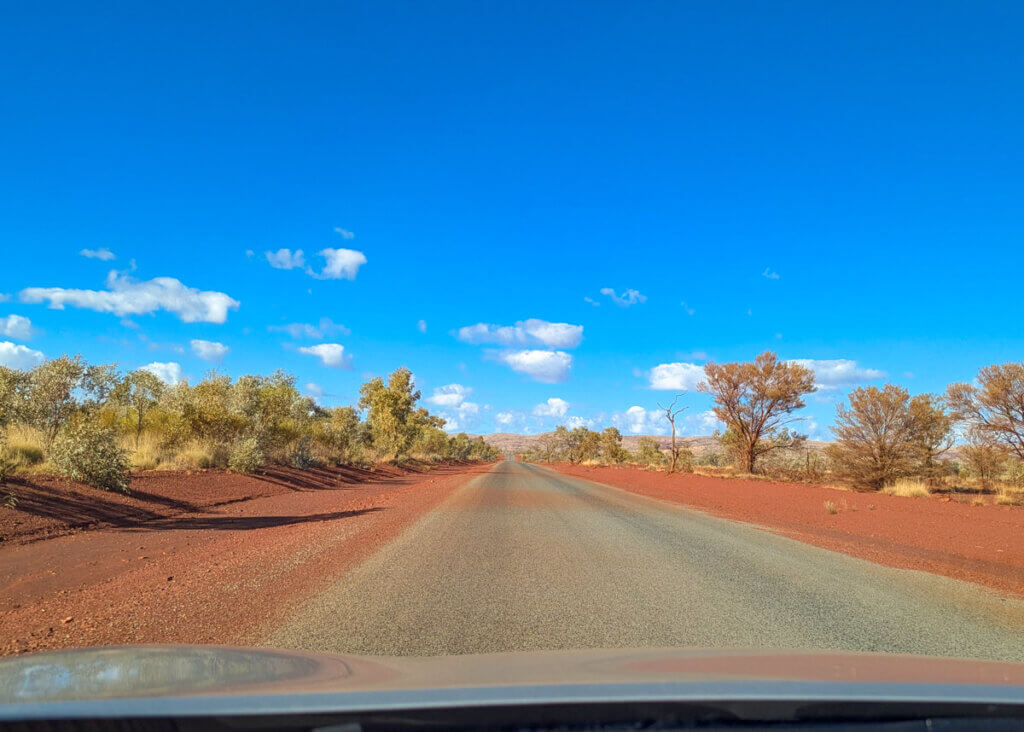
On occasion, we needed to drive for a few kilometres on unsealed roads, but our SUV (with a slightly higher clearance) coped fine. If you’re renting a vehicle it’s essential you confirm with your rental company if they allow you to leave the tarmac, otherwise your rental might be invalid.
4WD rentals are significantly more expensive than 2WD with higher fuel and insurance costs, and a far greater chance of getting lost, bogged down or otherwise into difficulty. For us, the cons (mostly the cost) far outweighed the pros, and we were happy with our trusty Nissan X-Trail. We didn’t at all feel like we were missing out.
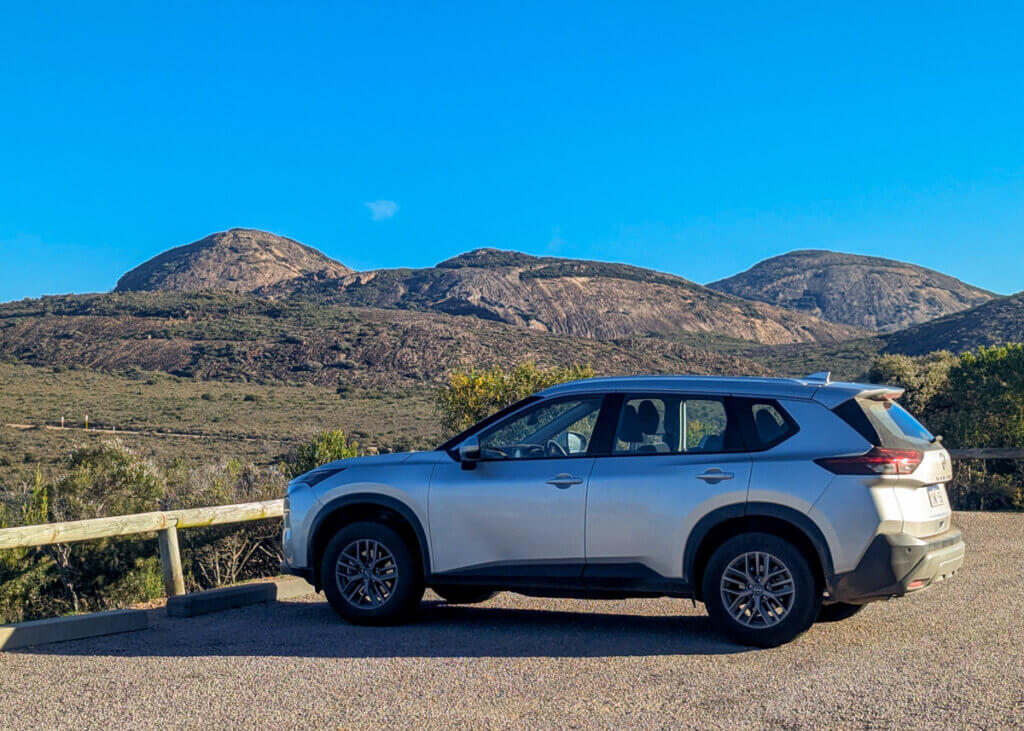
Camping equipment
Camping equipment is very reasonably priced in Australia, with K-Mart an ideal place to stock up on all the gear you’ll need (tents, sleeping bags, maps, cooking gear etc.). It’s not expedition-grade equipment, but it’ll certainly last you for one trip.
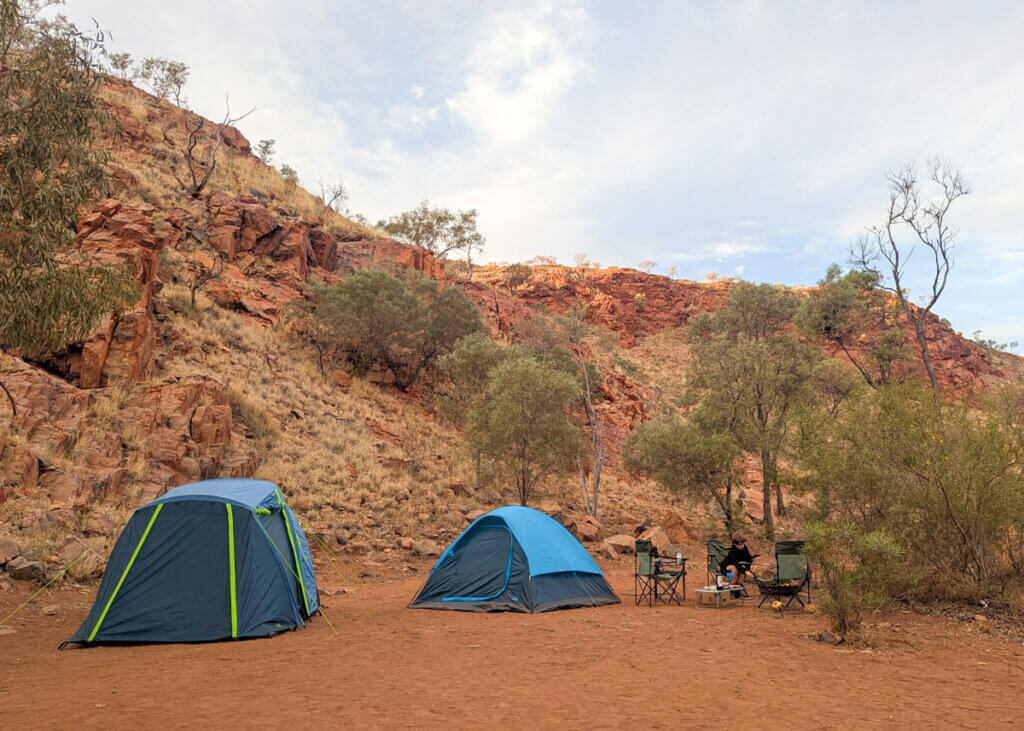
In case of running repairs, it’s always worthwhile purchasing duct tape and tough string in your toolkit. By the end of the six weeks, it’s highly likely something will need some TLC, in our case it was a tent pole and camping chairs that failed to last the course.
At most campsites there was a camp kitchen, a welcome retreat when visiting during the winter when the evenings were often cold and windy. These were always brilliantly stocked with hobs, fridges, freezers, toasters, kettle, oven and washing-up facilities. You just needed to bring your own utensils, pans, plates and cutlery.
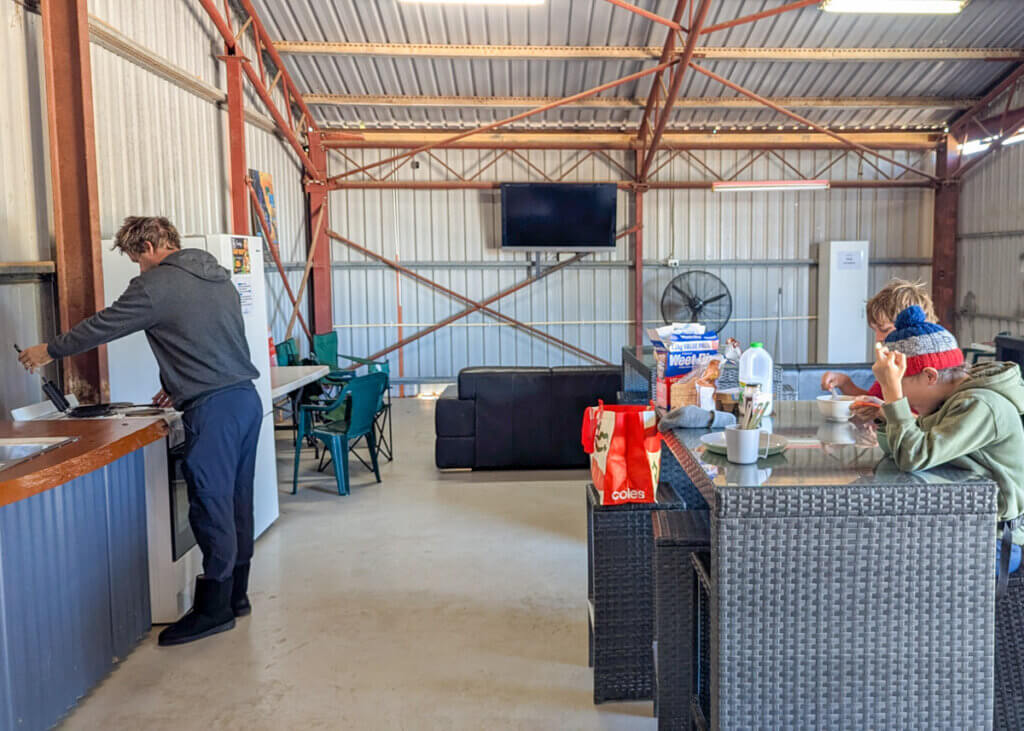
However, we still found that we needed to use our trusty camping stove on occasion, either because the weather was behaving, or the camp kitchen was full, or there were no facilities (such as at Cheela Plains Wilderness Camp).
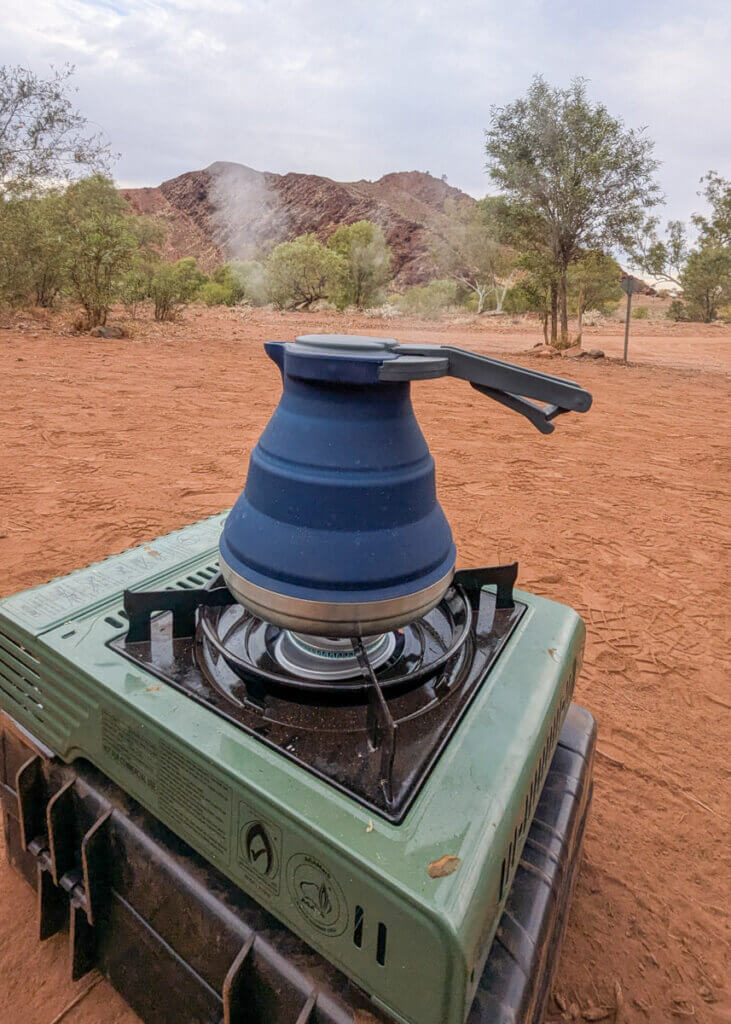
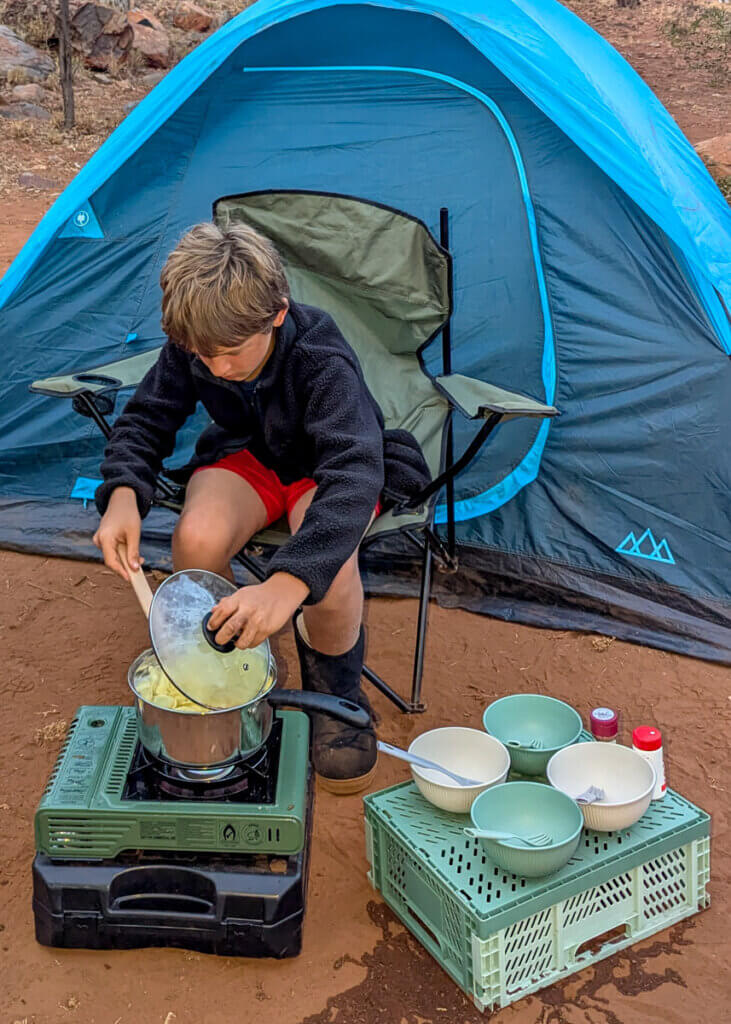
Top tips for road tripping Western Australia with kids
- There are some unavoidable long driving days in this Western Australia itinerary. Be prepared with snacks and audio books, and make sure that you know your kids are up for it.
- Download offline maps and audiobooks as signal is patchy in remote areas; prepare digital entertainment and directions beforehand.
- Book accommodation at Shark Bay and Ningaloo (Coral Bay / Exmouth) at the earliest opportunity, especially in the peak season (June to August). Accommodations, including campsites, get booked up months in advance, with many return visitors organising next year’s trip as soon as they return home. Some of the more popular places (e.g. Coral Bay) even open up booking windows eight months in advance of the most popular slots.
- Plan regular rest stops; factor in playgrounds, roadhouses, or quick nature stops wherever possible. WA have parking areas every 50km or so, sometimes with a long-drop toilet but usually just a layby and a bin. Every few hours, you’ll pass through either a roadhouse or small town.
- Never let your fuel tank drop below half. Fuel stops can be few and far between and it’s always worthwhile filling up. Don’t be tempted to hang on until a cheaper option arrives.
- Embrace downtime days. You can’t be on the go every day for 6 weeks.
- Invest in good sleeping mats and warm layers if travelling in winter as nights can be surprisingly cold. We used hot water bottles almost every night.
- Carry a basic first aid kit, especially for insect bites, sunburn, and minor scrapes (pharmacies and hospitals can be few and far between).
- Sun protection is essential, the UV is intense even in winter. Bring sun hats, rash vests, and reef-safe sunscreen.
- Keep an eye on the wind forecast. This west coast of Australia is prone to gale force winds and there were a couple of times we had to decamp (either to a motel, or just for the day until the wind died down).
- Telstra has the best signal in the more remote areas. Pick up a sim for $2 from a supermarket and activate online before you head away from the cities.
- Several national parks in WA require an entrance fee. If you’re planning to visit several of them during your trip, it usually saves money to buy a ‘multi-day pass ‘Holiday Pass’ that’s valid for 5 days, 14 days or four weeks. They can be booked online or via machines at the park entrance (usually credit cards accepted, occasionally only cash).
Budgeting for a Western Australia road trip
Western Australia is not a budget-friendly destination, and it’s easy to blow through funds on tours such as whale watching cruises or snorkelling trips. However, if you’re road tripping independently and keeping things simple, everyday costs are more predictable. For reference, our car hire came to AUD $2700 for six weeks (you can compare prices on kayak.com), during which we travelled 6700km, and we spent around AUD $800 at K-mart on camping equipment. Buying food from the supermarket was comparable to UK prices, although noticeably inflated in remote areas.
Other typical costs include:
- Campsites (powered site): AUD $35–$60 per night
- Family meal out (for a family of four at a mid-range restaurant): AUD $80–$120
- Fuel: AUD $1.70–$2.30 per litre (often higher in remote areas)
An epic 6-week Western Australia Road trip
Starting and ending in Perth, this guide details every stop on our 6-week Western Australia road trip, including accommodation, driving times, activities, and practical tips.
We travelled during the European summer holidays (July and August), which is winter in the southern hemisphere. This is actually high season for the northwest coast, and campsites can book out months in advance. Additionally, in the Outback, accommodation is often limited, expensive, and in high demand due to Fly-In Fly-Out mine workers.
This was one of the very few family adventures we’ve had over the years where we had to book all our accommodation well in advance; something we usually avoid. A summer in France and road tripping Iceland are the only other adventures that come to mind where we’ve had to pre-plan and book our itinerary and accommodation. But with limited availability on the west coast of Australia and high prices in remote areas, early booking was essential to keep costs down and ensure we had places to stay.
Day 1: Arrive to Perth
READ OUR GUIDE: 10 AMAZING things to do in Perth with kids
Where to stay: Flag Motor Lodge
Driving time from Perth Airport: 10 minutes
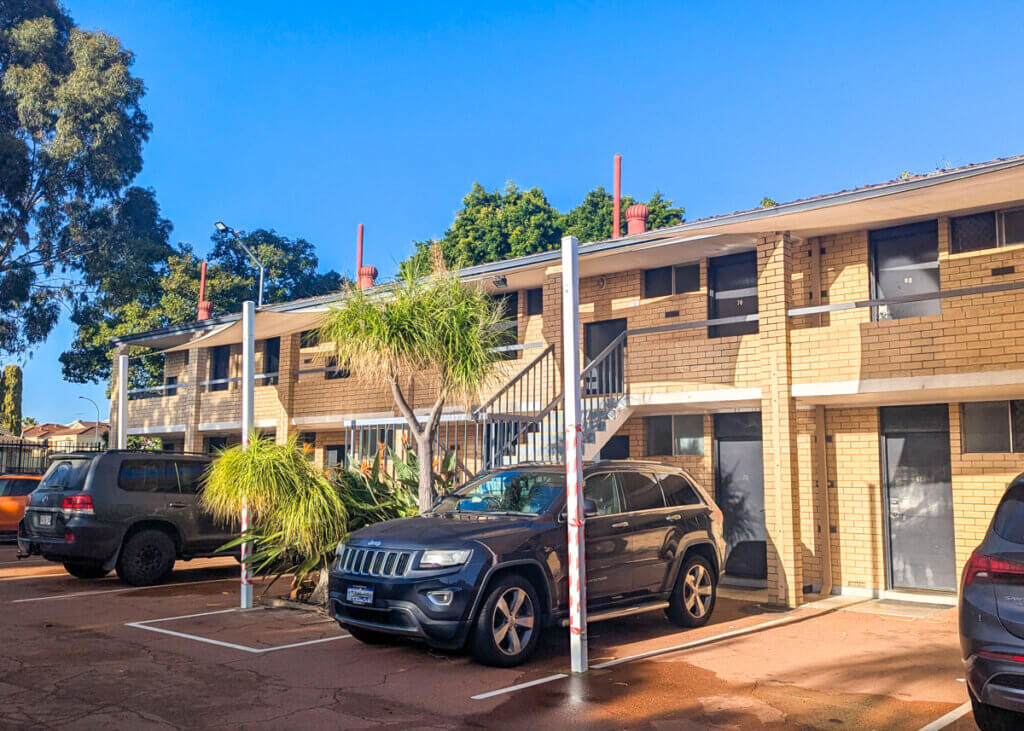
After picking up your rental car at the airport, head to Flag Motor Lodge to recover from your flight and stay overnight. This is a basic, but clean motel, just a 10 minute drive from the airport.
Our flight didn’t land until 5.00pm and after a five hour flight from Kuala Lumpur, we didn’t fancy a long drive.
Day 2-7: Margaret River
READ OUR GUIDE: 10 AMAZING things to do in Margaret River with kids
Where to stay: Waterfall Cottages
Driving time from Perth: 3 hours
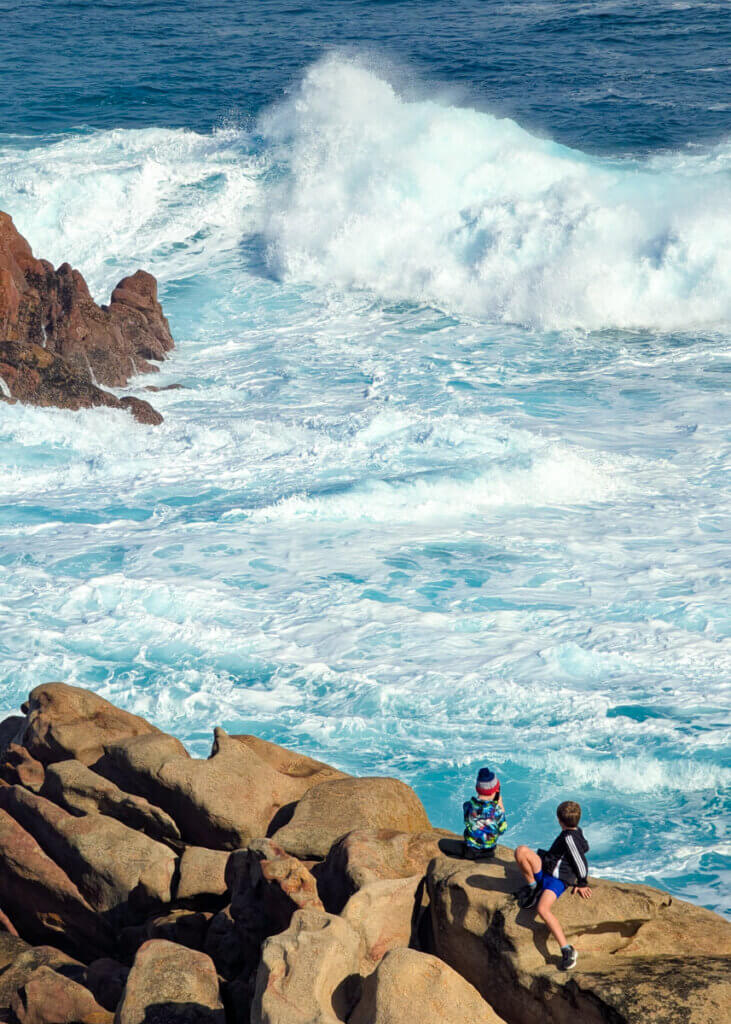
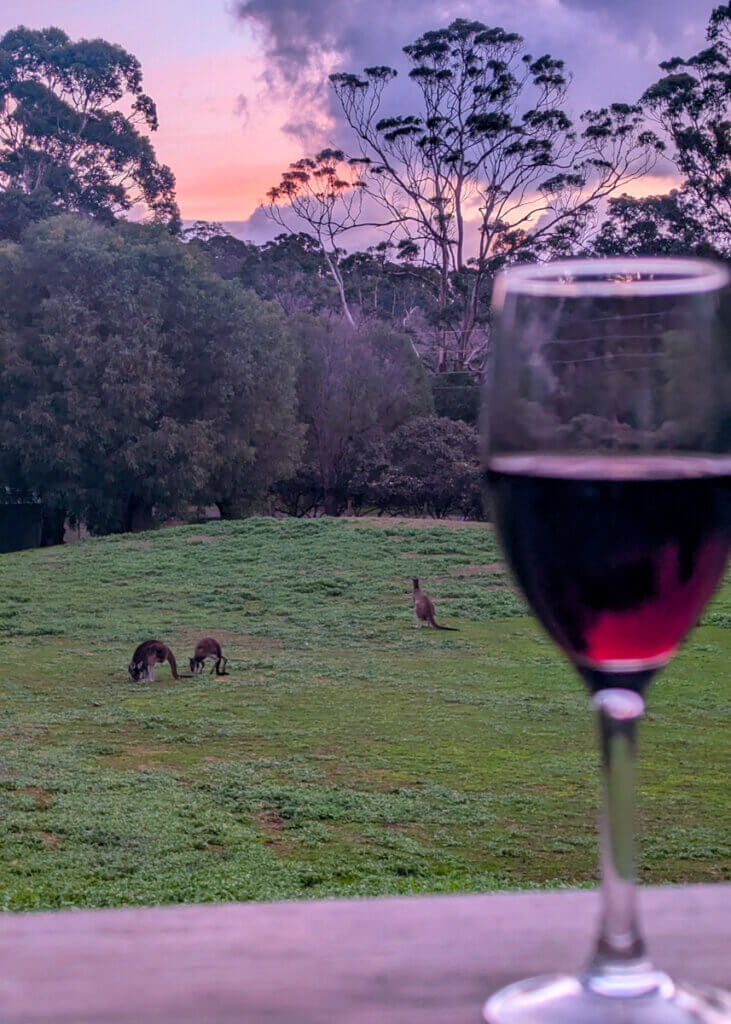
While you could spend a few days in Perth, we decided to head down to Margaret River first, and then stop into Perth for a few days once we started travelling north up the west coast.
The temperatures in Margaret River in July are a bit chilly and wet for canvas camping, and we wanted a place to decompress after a busy and full on 6 months living in Penang, so we booked a lovely family cottage at Waterfall Cottages for 6 nights.
Break up the journey down to Margaret River from Perth with a stop at Busselton to walk along the iconic Busselton Jetty, the longest wooden jetty in the Southern Hemisphere.
Highlights in Margaret River include:
- Coastal walk at Surfers Point
- Wandering through Boranup Forest
- Watching the Southern and Indian Oceans collide at Cape Leeuwin Lighthouse
- Sampling local wines at wineries
- Hitting golf balls and sampling a local beer at CBCo
- Clambering over boulders at Canal Rocks
- Getting lost in the maze at Amaze’n Margaret River
Day 8-10: Fremantle
READ OUR GUIDE: 10 AMAZING things to do in Perth with kids
Where to stay: Fremantle Village
Driving time from Margaret River: 3 hours
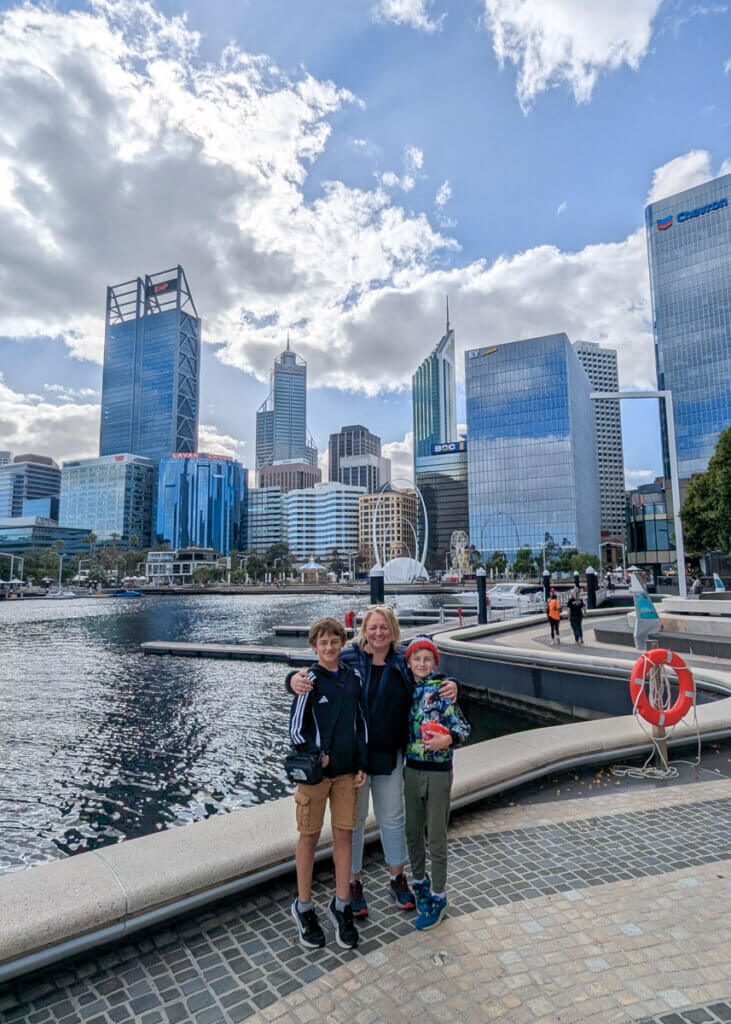
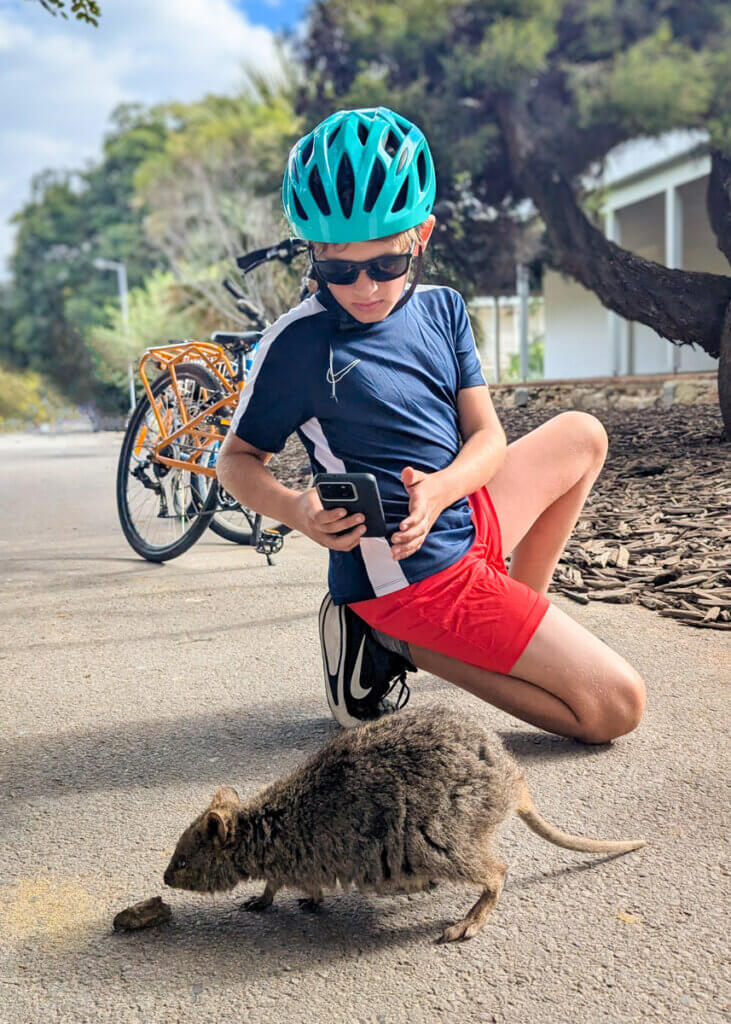
Base yourself in Fremantle (rather than Perth), as this is where the ferry departs to Rottnest Island and there’s a more interesting vibe compared to Perth CBD.
Visit Kings Park, hire bikes to cycle around Rottnest Island and see the quokkas, and enjoy a beer or two at Little Creatures Brewery in Fremantle (also serving fantastic pizza). It’s also worth having a stroll around the CBD as the contrast to this scenery will be very different when you drive out of Perth in a couple of days.
Put aside a half day to purchase your camping gear needed for onward travels, or you may want to do a daytrip to Busselton Kmart from Margaret River.
Day 11: Willowbrook Farm, Neergabby
Where to stay: Willowbrook Farm
Driving time from Fremantle: 1 hour 15 minutes
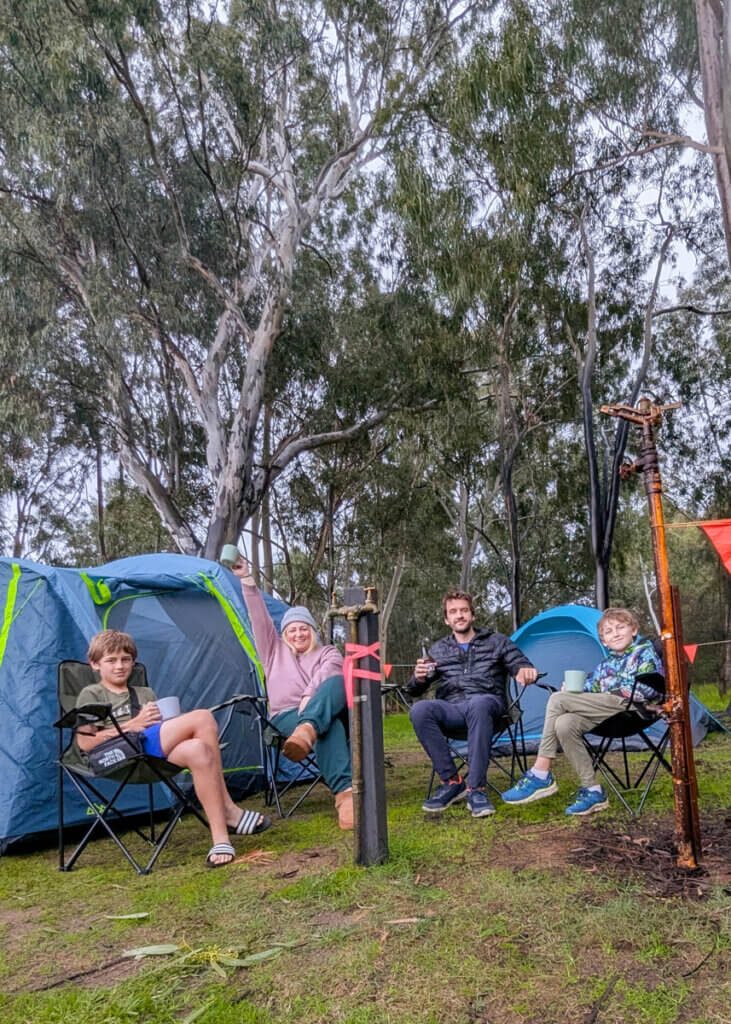
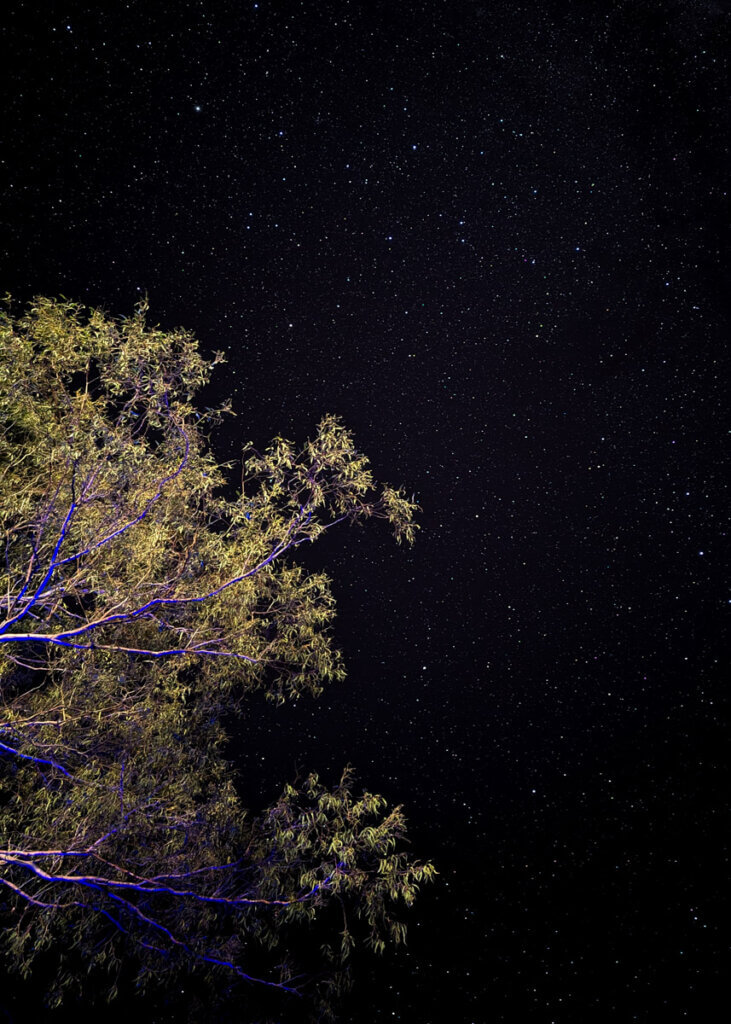
With your camping gear bought and packed in the boot of your car, it’s a good idea to test it all and make sure everything works before heading too far out of Perth, where the landscape becomes more remote and camping shops are few and very far between.
We opted to do our recce at Willowbrook Farm, just over an hours drive north of Perth. The nearest Kmart was only a 20 minute drive away if we’d forgotten anything or something didn’t work.
And what did we find out from our recce? We needed warmer clothes for the night time. So we returned to the Perth suburbs first thing in the morning, and also treated ourselves to some hot water bottles.
Day 12-13: Cervantes
Where to stay: RAC Cervantes Holiday Park
Driving time from Willowbrook Farm: 1 hour 20 minutes
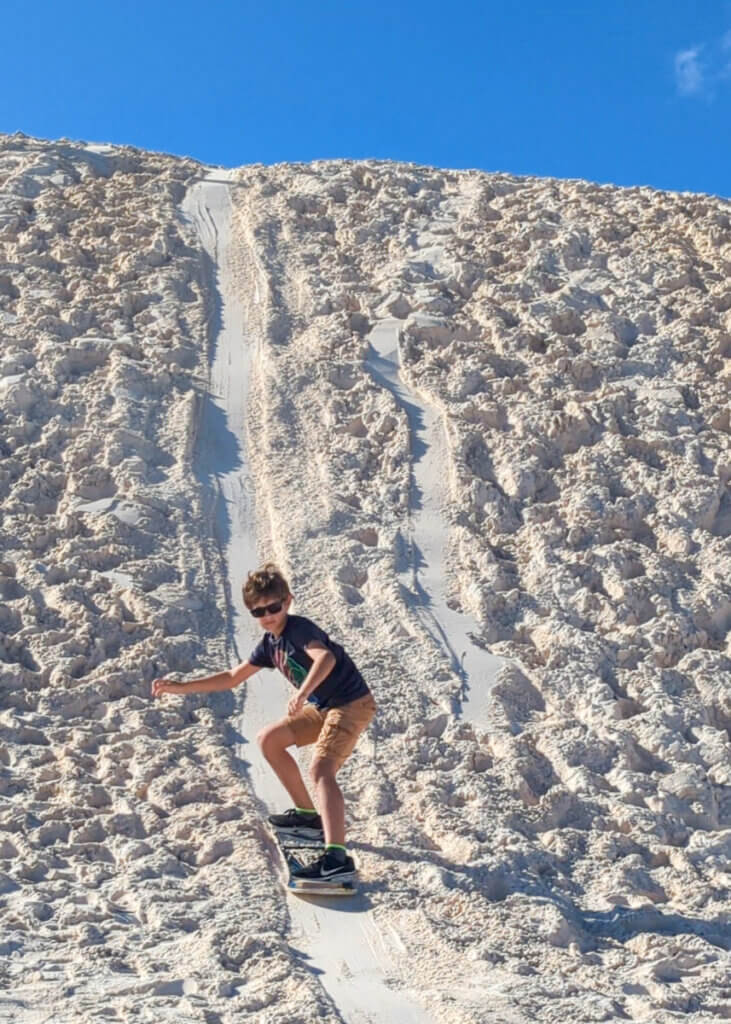
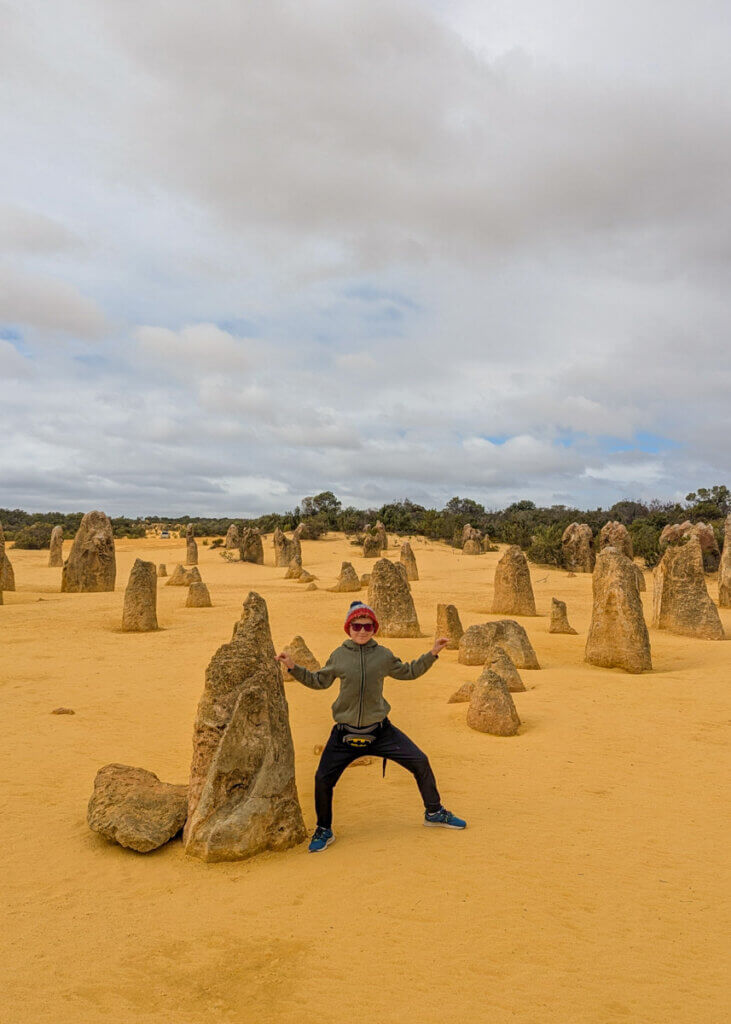
Cervantes is only a short drive north. However, there are two essential stops. First at Lancelin to enjoy sandboarding on the sand dunes north of town (located here). Sand boards can be hired at the car park.
Second to explore is the Pinnacles, the striking rocks rising from the sands of Nambung National Park. Unfortunately, 2WDs are no longer recommended to drive around the Pinnacles. However, there is a signposted walk instead, which is equally rewarding.
These two stops will take up a full day. If you’ve needed to backtrack to Perth for camping gear, you can do the Pinnacles the following morning.
Otherwise, use your second day in Cervantes to take a breather, reset your camping gear storage in the car (it always seems to make more sense a few days into a road trip), and enjoy the local beaches and a relaxed meal. We always try to embrace slow travel with kids rather than racing around ticking off every sight; scheduled breather days are essential.
Day 14-15: Kalbarri National Park
Where to stay: Kalbarri Red Bluff Tourist Park
Driving time from Cervantes: 4 hours 10 minutes
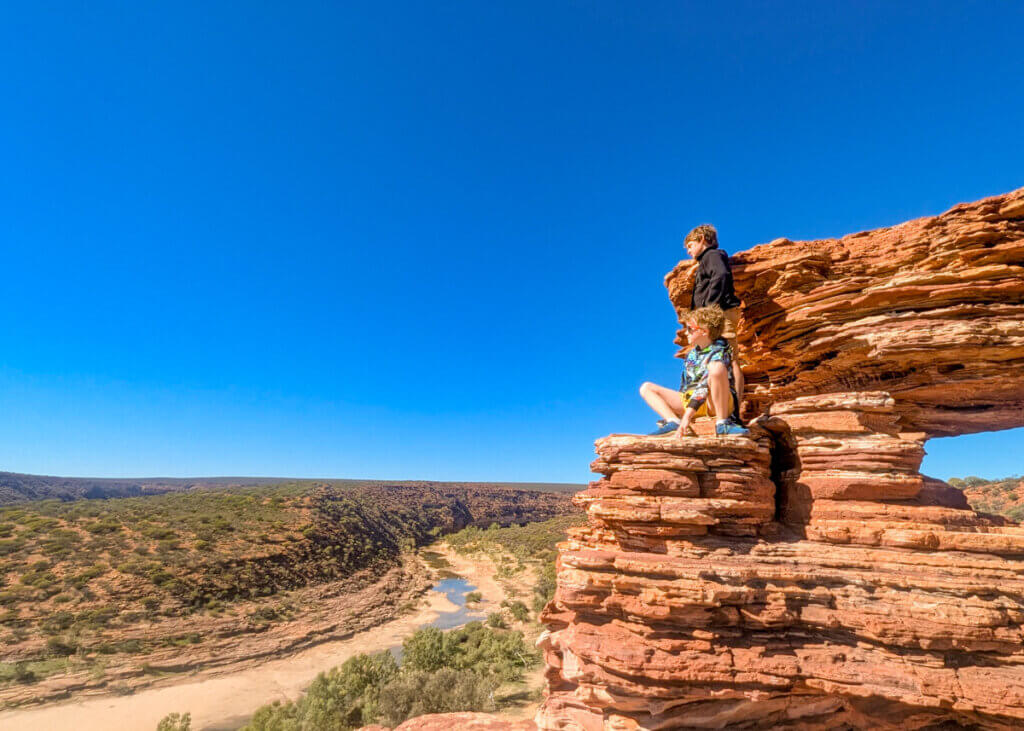
It’s a longer driving day today, stopping at Geraldton en route for lunch and a stock up of supplies, then taking a little detour off the main road to Pink Lake Lookout.
A remote coastal campsite with ensuite pitches awaits you at Kalbarri Red Bluff Tourist Park. Stretch your legs at Red Bluff Beach, just 150 metres from the campsite, where the sunset views are incredible.
The next day, head over to Kalbarri National Park. First visit Nature’s Window (a 20 minute walk from the car park, and then continue along the footpath to further explore the gorge), then to Kalbarri Skywalk (there’s a small café here), before taking in the views at Z Bend and returning back to camp. If time allows, you may like to follow the 9km Loop Trail from Nature’s Window (allow 3 to 5 hours to complete, start early, and take plenty of water).
Day 16-19: Shark Bay
Where to stay: Shark Bay Caravan Park
Driving time from Kalbarri: 4 hours
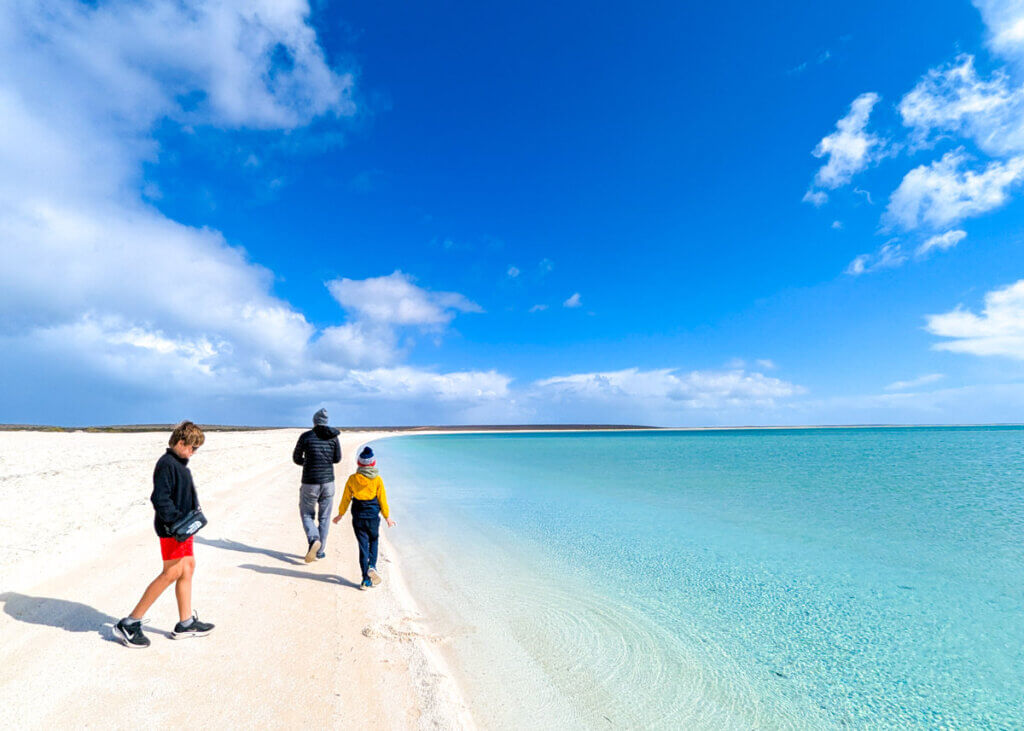
Continue driving north, stopping at the stunning Shell Beach, before arriving in Denham. We did try initially to book a campsite at Monkey Mia, but it was completely booked out. So instead we stayed at Shark Bay Caravan Park in nearby Denham, where there is a better choice of restaurants and shops for convenience, although not the most inspiring of campsites.
In all honesty, we’re pleased we didn’t stay in Monkey Mia. Yes, the beach is pretty but hundreds of tourists descend here every morning to see the dolphins being fed (and often it’s only a couple of dolphins). It’s not really the kind of wildlife viewing we enjoy, and we decided to give it a miss. Instead we popped over later in the day to enjoy lunch at the restaurant and spotted a family of dolphins playing a little distance from the shore.
Whilst in Shark Bay it’s also worthwhile visiting Eagle Bluff Lookout, Ocean Park Aquarium (although we saw no sharks), Little Lagoon, and Francois Peron National Park (4WD only, even to Peron Heritage Precinct). We also enjoyed a lovely afternoon following the Denham Discovery Trail with lunch at Denham Waterfront Hotel.
Day 20-21: Canarvon
Where to stay: Hospitality Carnarvon, SureStay Collection by Best Western
Driving time from Shark Bay: 3 hours 20 minutes
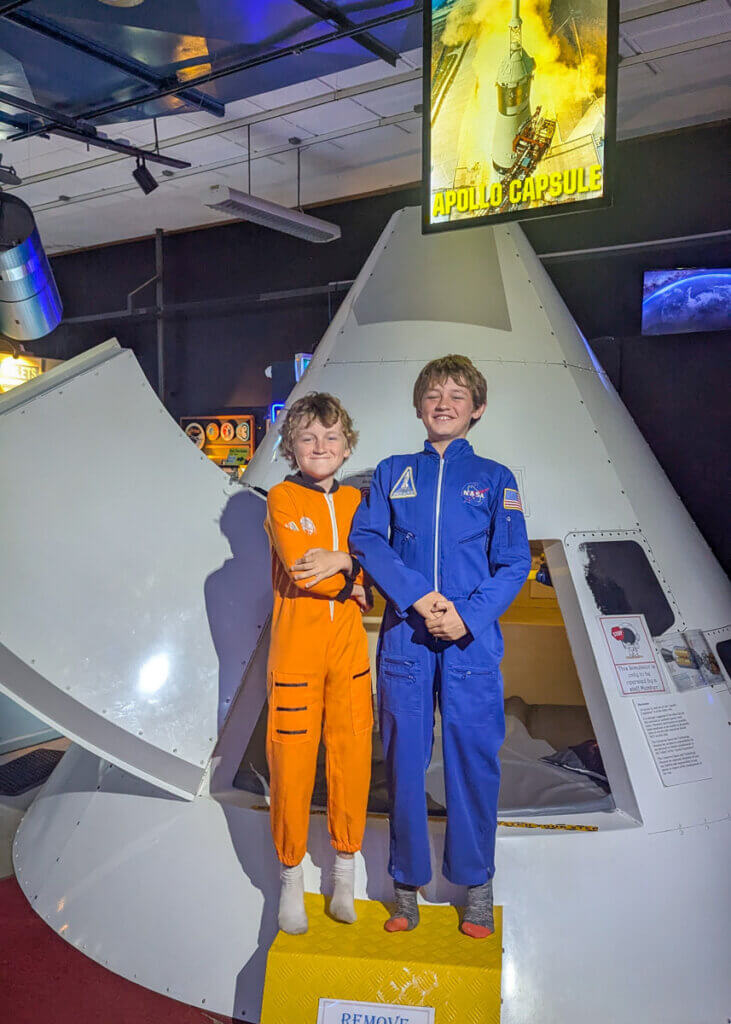
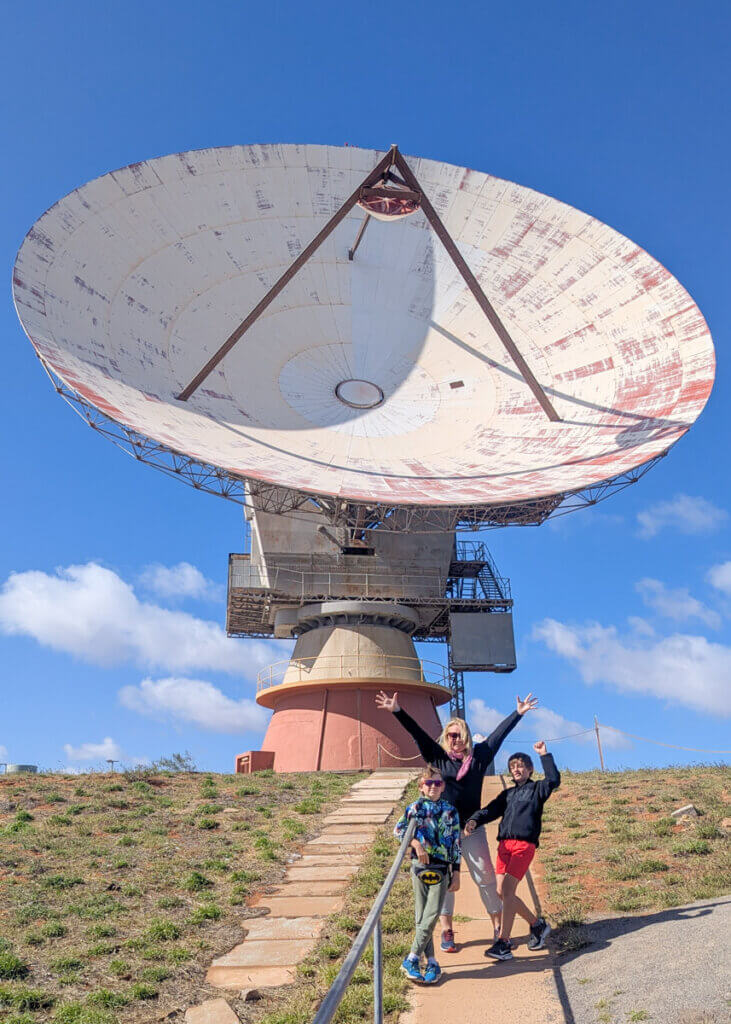
To break up the journey to Coral Bay (gateway to the Ningaloo Reef), we stopped for a couple of nights at a motel in Carnarvon. This was a good opportunity for some decent showers and to stock up on food for onward travels.
Note that Carnarvon has the strictest alcohol laws in the country with bottle shops closed on Sundays and Mondays. There are limits on purchases at all other times, so it’s not the best place to stock up on alcohol. Despite what you might hear from other travellers, the alcohol prices at the next stop (Coral Bay) aren’t much different to the rest of WA.
The Carnarvon Space and Technology Museum is an absolute must visit with the kids while in Carnarvon. This superb museum celebrates the town’s role in the Apollo space program. Visitors can explore interactive exhibits, including full-size capsules, a rocket replica, and a planetarium. It’s very hands-on and we spent hours here.
Day 22-27: Coral Bay
READ OUR GUIDE: Coral Bay without the tours: is it worth it for families?
Where to stay: Coral Bay People’s Park
Driving time from Canarvon: 2 hours 30 minutes

Continuing north, break up your drive at Minilya Bridge Roadhouse for lunch, before continuing to Coral Bay.
For exploring Ningaloo Reef, you can choose between staying in Coral Bay or Exmouth as a base. Exmouth accommodation is extortionately priced and there are two (soon to be three) campsites at Coral Bay. We opted for Coral Bay People’s Park and managed to get the last pitch booking over a month in advance.
This tiny tourist town is absolutely packed with hundred of campers in the high season (July and August) and there’s very little in the way of a local vibe. First impressions may not be great. Then there’s the eye-watering price of tours and activities, the kind you could do for a fraction of the cost elsewhere in the world. Whale shark tours are a big draw here (sadly out of season for our visit), but even if they weren’t, it’s A$1800 for a family with no guarantees of a sighting!
But once we settled in, Coral Bay worked its magic.
We loved slowing down with zero plans and it was just what we needed at this stage of the trip. For us, Coral Bay was all about slowing down with late brekkies, lazy wanders to the beach, mustering the courage for a (freezing!) swim in the sea, dining on pies (Coral Resort Bakery) and pizza (Reef Cafe), and always making it to the beach by 5.30pm to catch the sunset. While a 4WD is needed to explore more of the landed region here, there are a couple of beautiful spots nearby that are accessible by 2WD (Paradise Beach and Mauds Landing Beach).
But if you want to, there are snorkelling tours, diving tours (minimum age 12), quad bike tours, and more. Just pop into the tour agency next to the main shop in Coral Bay (well-stocked, though prices are inflated).
Day 28: Cheela Plains Station Stay
READ OUR GUIDE: Cheela Plains Station: wilderness camping in Western Australia
Where to stay: Cheela Plains Station Stay
Driving time from Canarvon: 4 hours 30 minutes
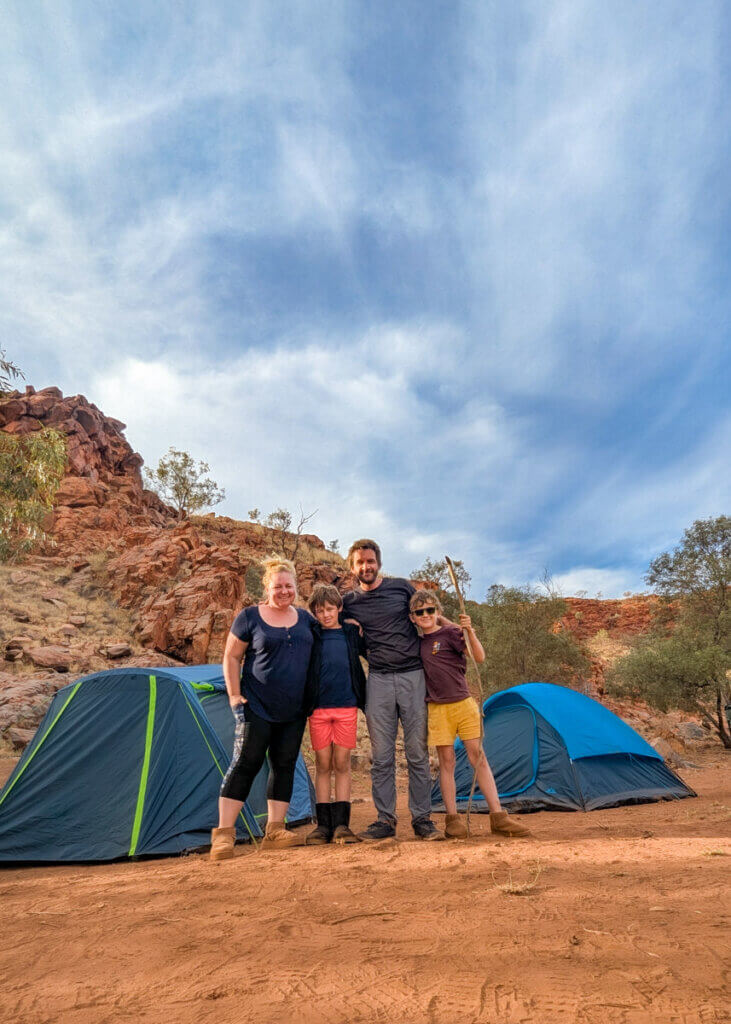
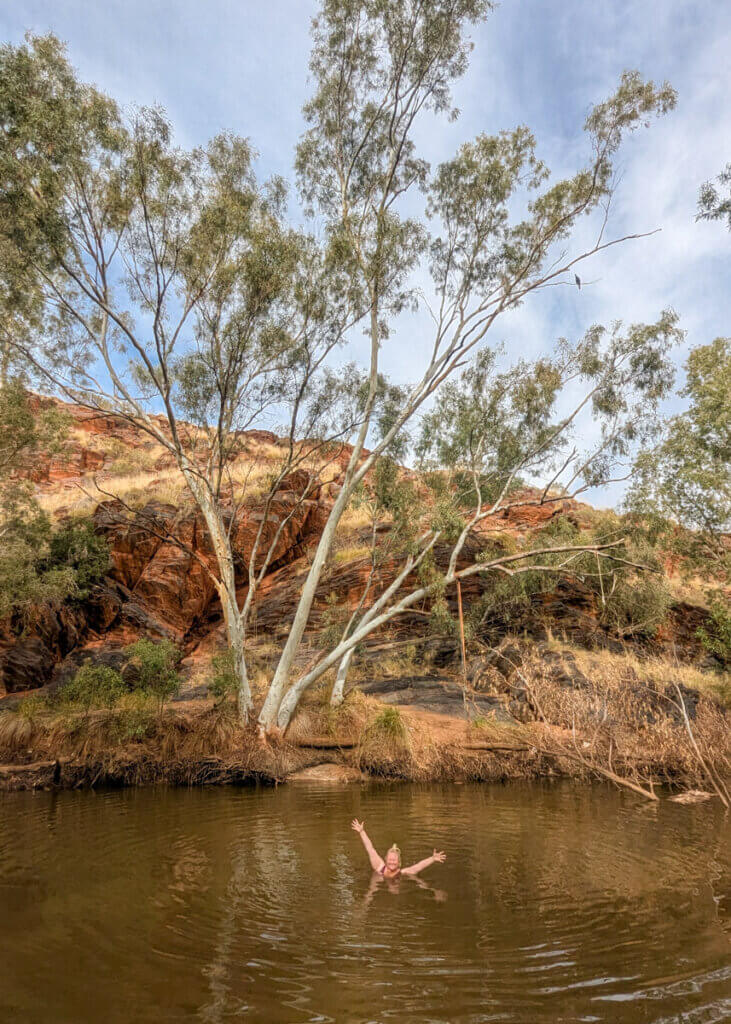
It’s now time to start the Outback leg of this Western Australia road trip with kids. There are long driving days ahead through vast, expansive wilderness, broken up with overnight campsites. These campsites are mostly unpowered.
The first campsite is at Cheela Plains Station Stay, with a lunchtime stop at Nanutarra Roadhouse en route.
Although you can camp at the main station with facilities, we opted for a wilderness campsite. This turned out to be the best camping experience of the entire trip. It was beautifully remote, yet accessible by 2WD, it was the first (and only time) we were allowed a campfire at our pitch, and the onsite bathing facilities (a nearby watering hole) were absolutely incredible.
Day 29: Drive to Karijini National Park
Where to stay: Karijini Eco Park
Driving time from Cheela Plains Station Stay: 2 hours 20 minutes
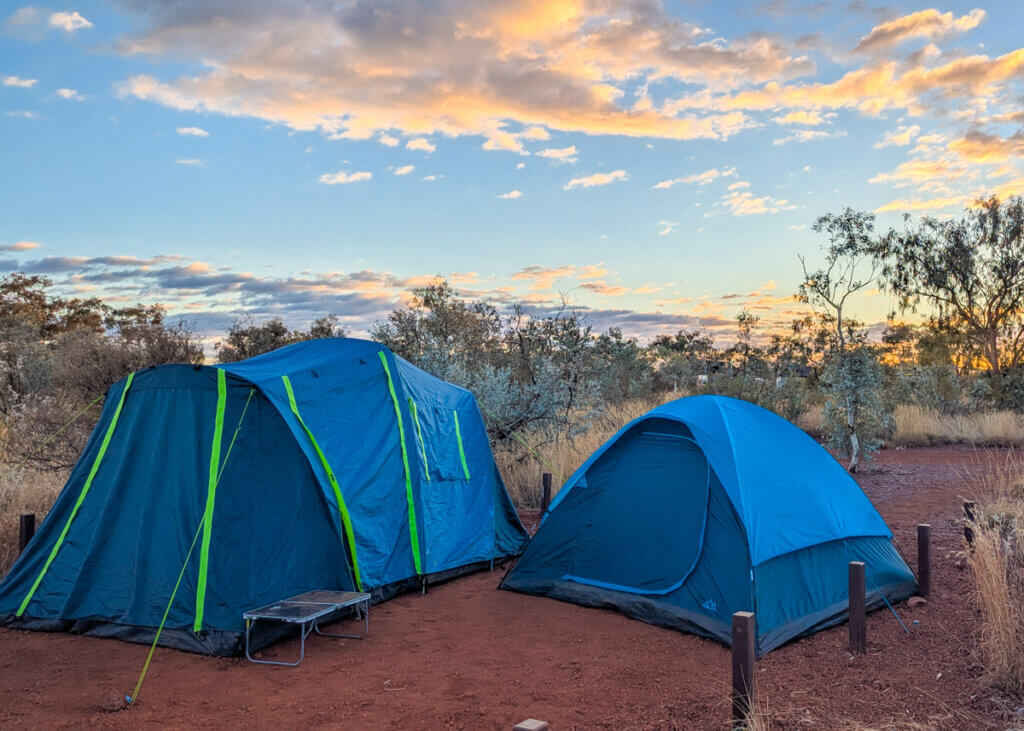
Looking at Google Maps, it may seem that the obvious driving route to Karijini National Park is directly via Tom Price. However this section of road is gravel and in poor condition. It’s much quicker to drive via Paraburdoo and then onto Tom Price to stock up on food and supplies before heading into Karijini National Park.
We really could have stayed longer at Karijini National Park, but the campsite was fully booked with only the one night available when we booked six weeks prior. So one night at Karijini Eco Park it was!
Day 30: Karijini National Park
Where to stay: Yurlu Caravan Park, Newman
Driving time from Karijini Eco Park: 2 hours 40 minutes
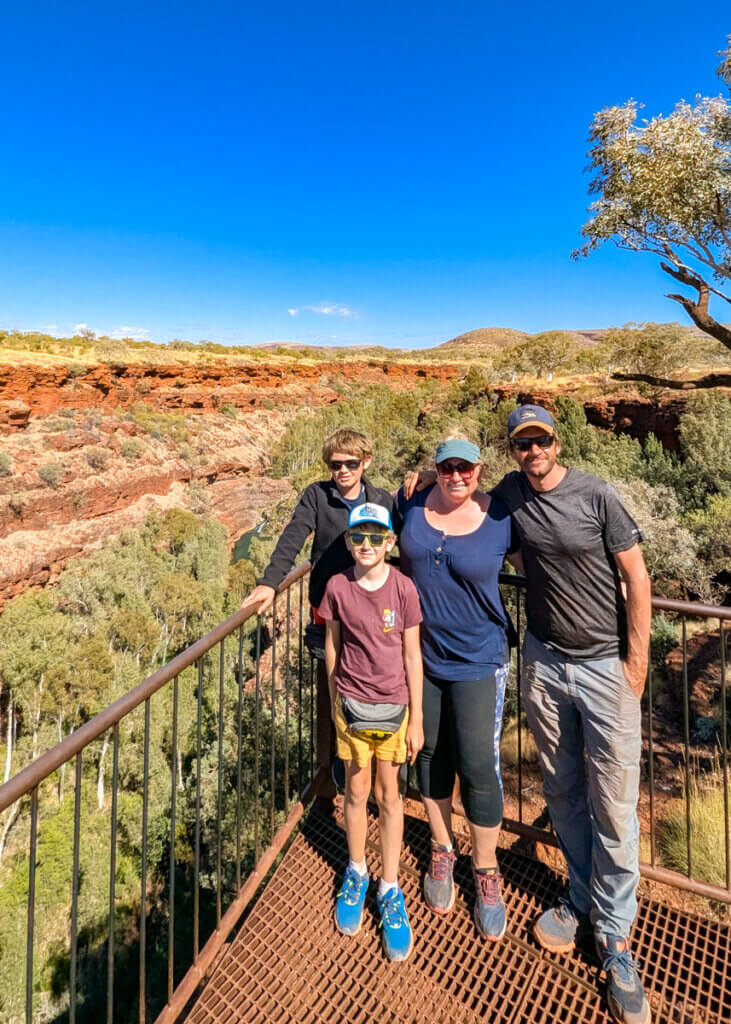
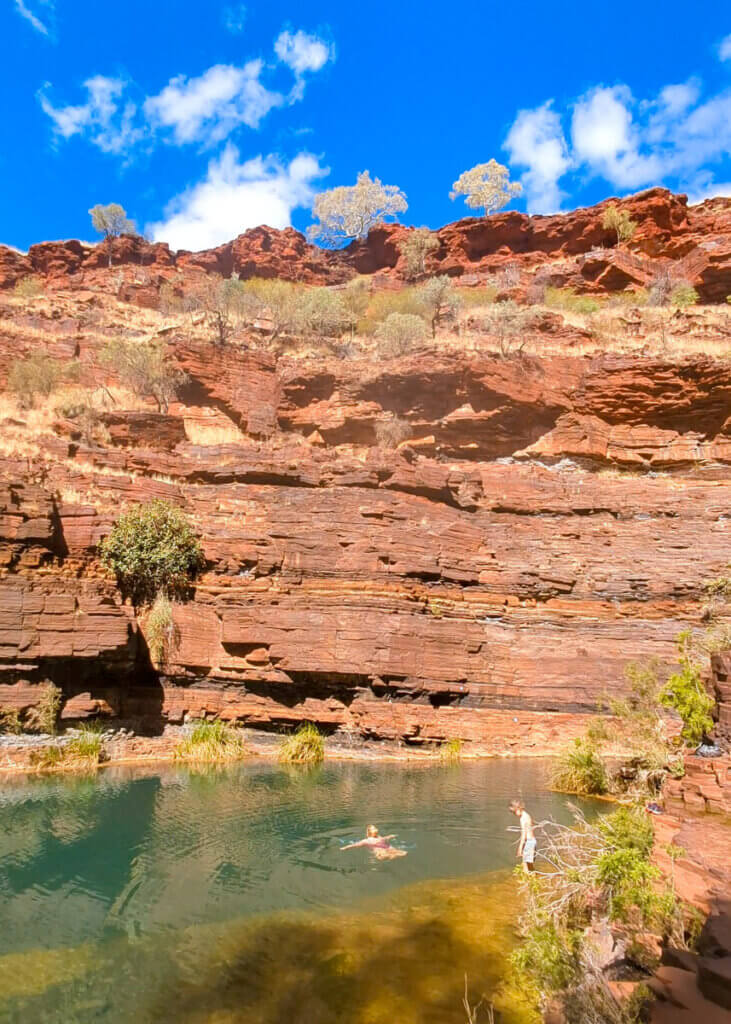
Get up early and pack up camp to get a head start on this 5km hiking loop. The trail follows the rim of Dales Gorge to Three Ways and Circular Pool Lookouts, then descends into the gorge itself. From there, follow the Dales Gorge Trail past Fortescue Falls and Fern Pool before climbing back up to the Fortescue Falls car park.
As all campsites were fully booked for our second night in Karijini National Park, we continued on to Newman for an overnight stop. In all honestly, we felt we’d explored enough of the park to leave without feeling rushed.
The campsite in Newman was probably the worst of the trip, but it was only for one night. We popped to The Red Sands Tavern, a miner’s bar, for dinner.
Day 31: Karalundi
Where to stay: Karalundi Caravan and Camping Park
Driving time from Newman: 3 hours 50 minutes
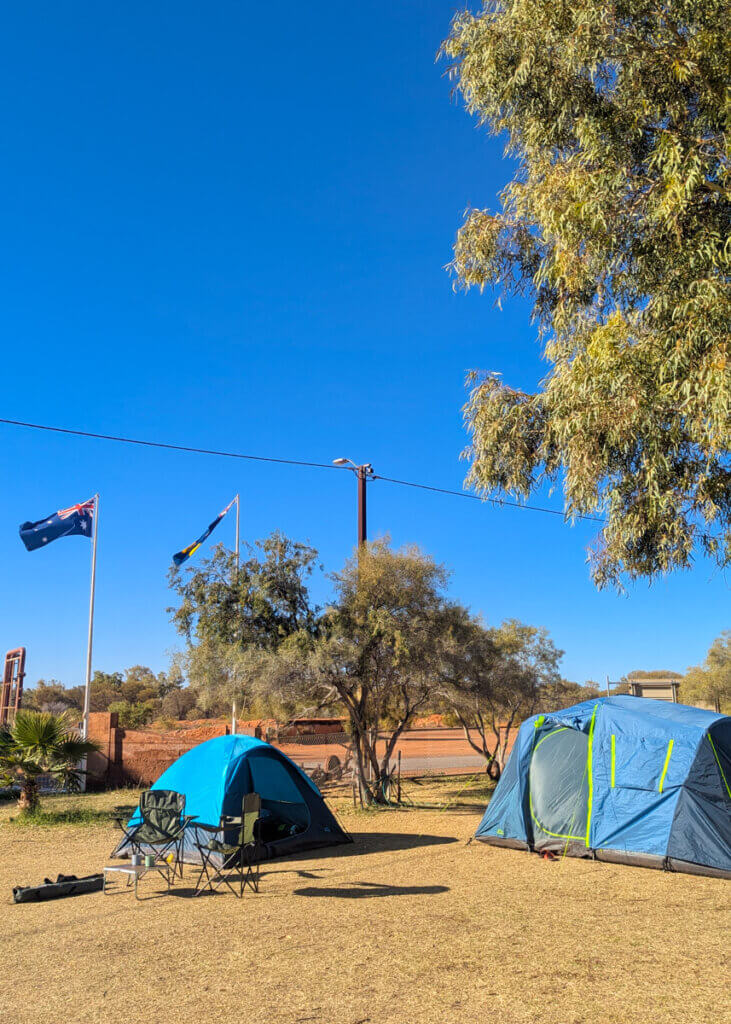
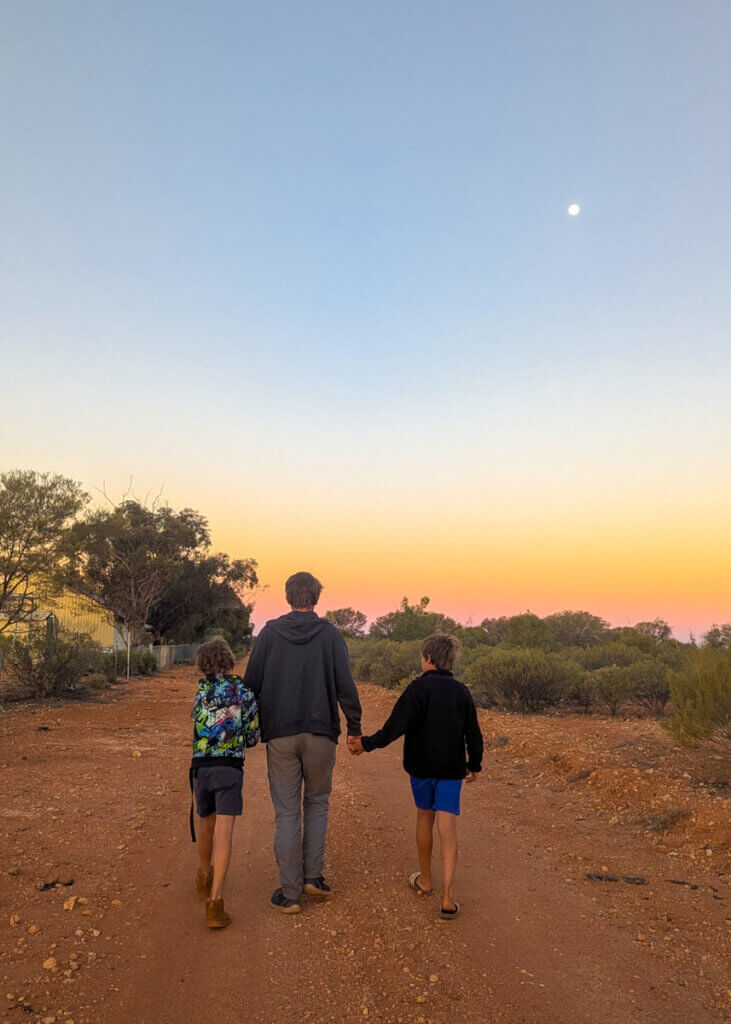
Just south of Newman Airport, you’ll pass the Tropic of Capricorn, marked by a roadside sign that makes for a great photo stop. Further along, break up the long drive at Kumarina Roadhouse; this is classic Outback territory with little else worthy of a stop today.
Then it’s an overnight stop at Karalundi Caravan and Camping Park, which is part of Karalundi College, a Christian Aboriginal boarding school providing free education to Aboriginal students. Please note that this site is alcohol and smoke-free.
Day 32: Leonora
Where to stay: Leonora Village & Caravan Park
Driving time from Karalundi : 6 hours 50 minutes
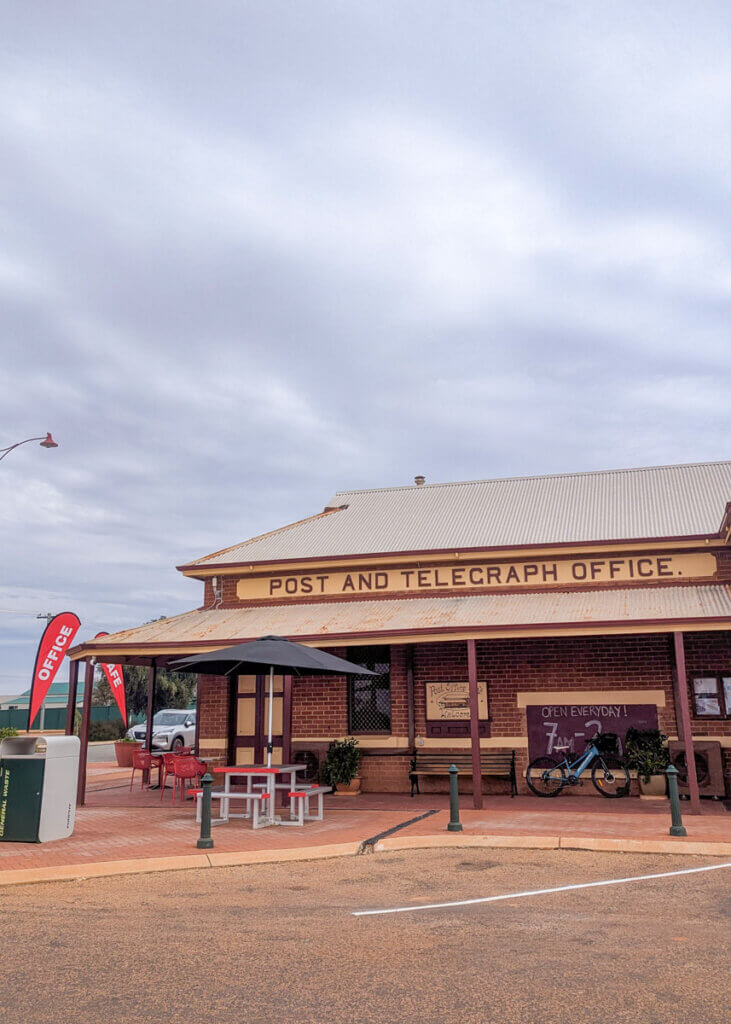
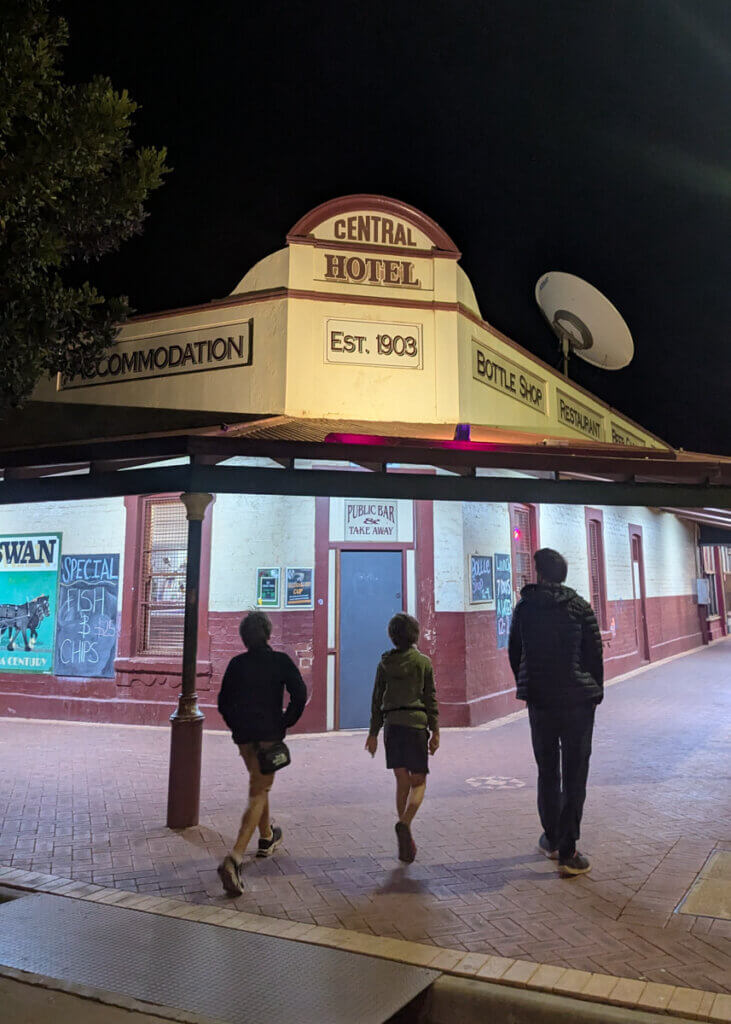
Today is one of the longest driving days of the trip, with vast open stretches of true Outback nothingness punctuated with stops at old mining towns. It’s a unique kind of drive (both meditative and monotonous) so it’s all about adjusting your mindset and embracing the scale of the landscape.
Fuel stops are limited, so be sure to fill up at Meekatharra before heading south past Cue (worthy of a quick exploration) and then east to Sandstone (this the better route rather than the gravel road to Wiluna).
In Sandstone, stop at the Post Office Cafe for lunch (good toasties). There’s a playground and public toilets opposite. It’s also worthwhile taking a detour to London Bridge (a natural stone arch) to stretch the legs.
Your overnight stop is in Leonora. The town is a bit rough around the edges, but the food at The Central Hotel (walking distance from the campsite) was quite decent for dinner.
Day 33: Kalgoorlie
Where to stay: Discovery Parks – Kalgoorlie Goldfields
Driving time from Leonora: 2 hours 30 minutes

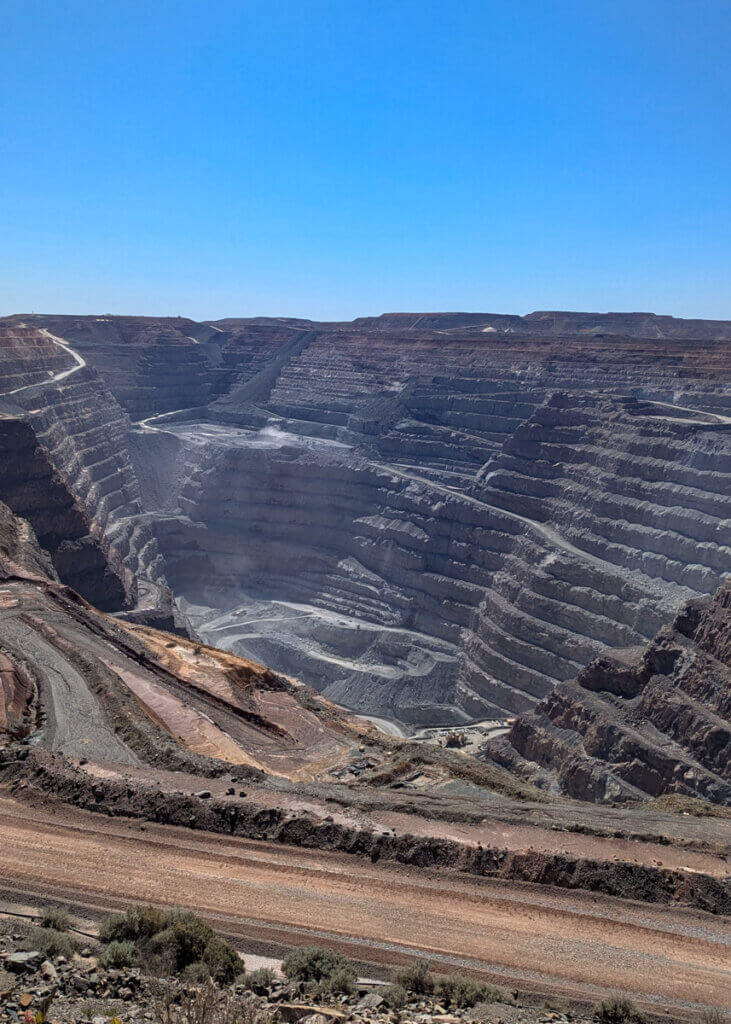
In the morning, make time to explore Gwalia Ghost Town, just a five minute drive south of Leonora. Once a thriving gold mining settlement, Gwalia was abandoned almost overnight in 1963 when the mine closed. Today, the preserved buildings offer a rare glimpse into remote mining life in the early 1900s. The onsite museum is well worth a visit for historical context and artefacts from the Sons of Gwalia mine.
Then it’s onto Kalgoorlie–Boulder (often simply called Kalgoorlie). This is Western Australia’s historic mining hub, founded in 1893 during the gold rush, and one of the largest Outback towns in the country.
Victorian architecture lines Hannan Street and just outside town lies the Super Pit, one of the world’s largest open‑cut gold mines. You can view the Super Pit from a lookout point and if you time your visit correctly, you can witness the blasts (check this website for blast times).
To dive deeper into the town’s mining heritage, head to Hannans North Tourist Mine, one of Kalgoorlie’s first registered mines, for interactive exhibits, heritage displays, and a glimpse of early prospector life.
Day 34-38: Esperence
READ OUR GUIDE: Esperance with kids
Where to stay: Blue Tides Accommodation
Driving time from Kalgoorlie: 4 hours 15 minutes
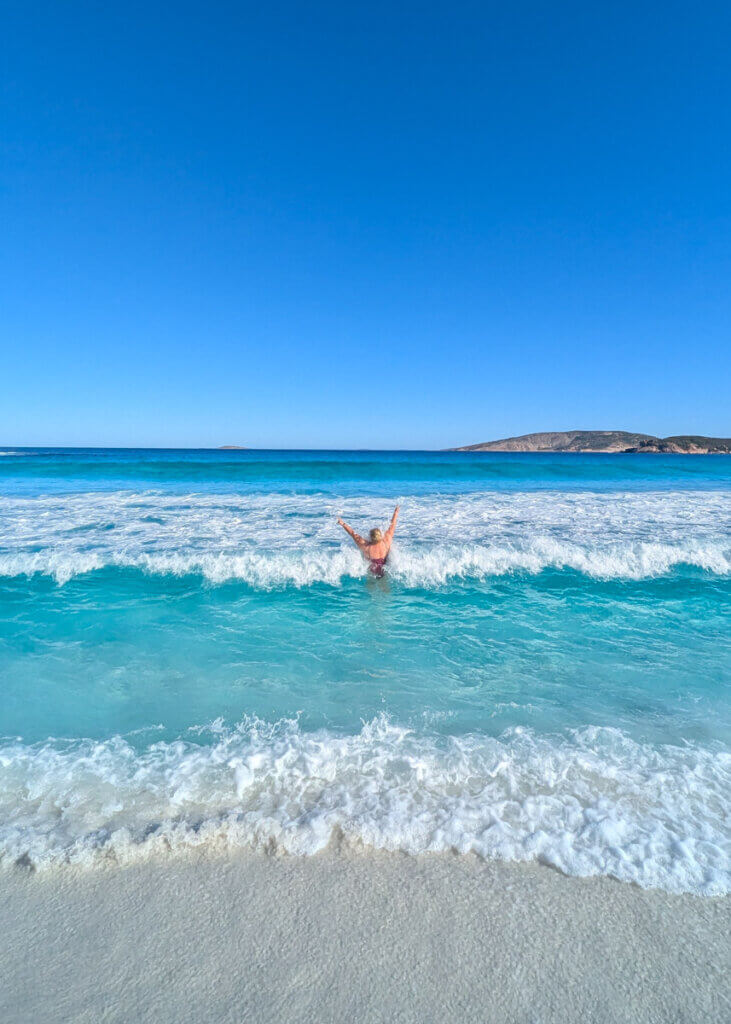
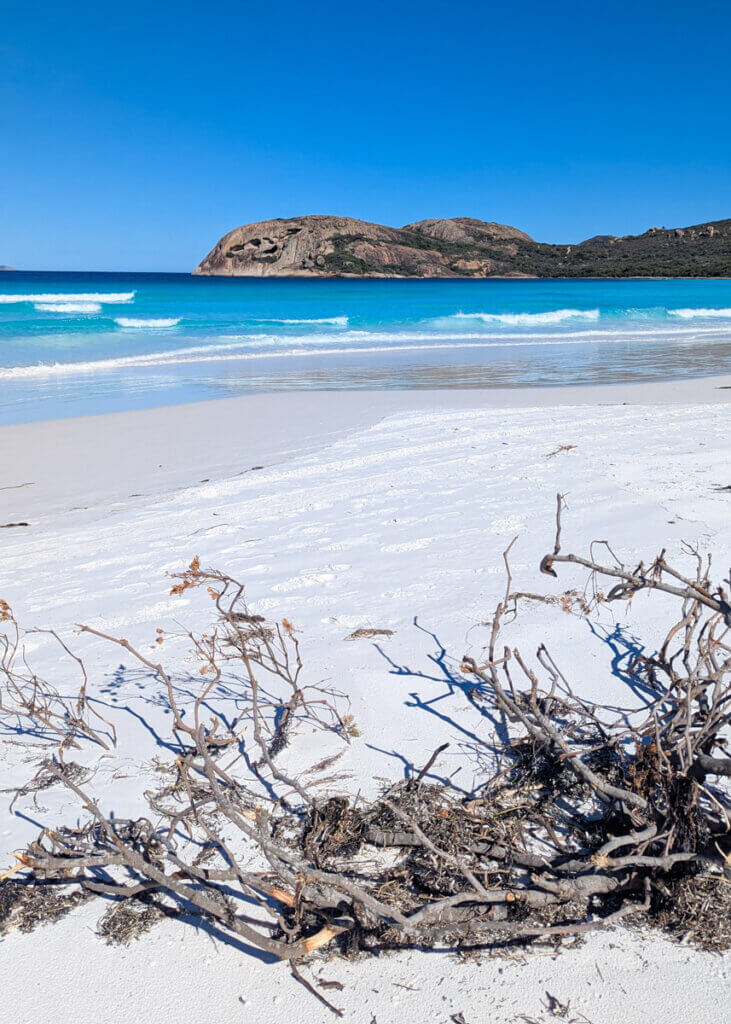
After days of long Outback drives and nightly camping, a proper bed awaits in Esperance. We stayed at Blue Tides Accommodation, a traditional three-bedroom suburban home with a garden and parking. It was the perfect place to decompress after our adventures, slow the pace, and enjoy the spectacular southern coastline with scenic drives and beach walks.
Allow one full day to explore the spectacular beaches of Cape Le Grand National Park (Hellfire Beach may be one of our favourite ever beaches) and another day to follow Esperance’s Great Ocean Drive, a 40-kilometre circular loop showcasing stunning beaches and rocky headlands. In Esperance itself there is a Tanky Jetty for a stroll, a playground and Esperance Museum.
Day 39-40: Perth
READ OUR GUIDE: 10 AMAZING things to do in Perth with kids
Where to stay: Metro Hotel Perth City
Driving time from Kalgoorlie: 7 hours 40 minutes
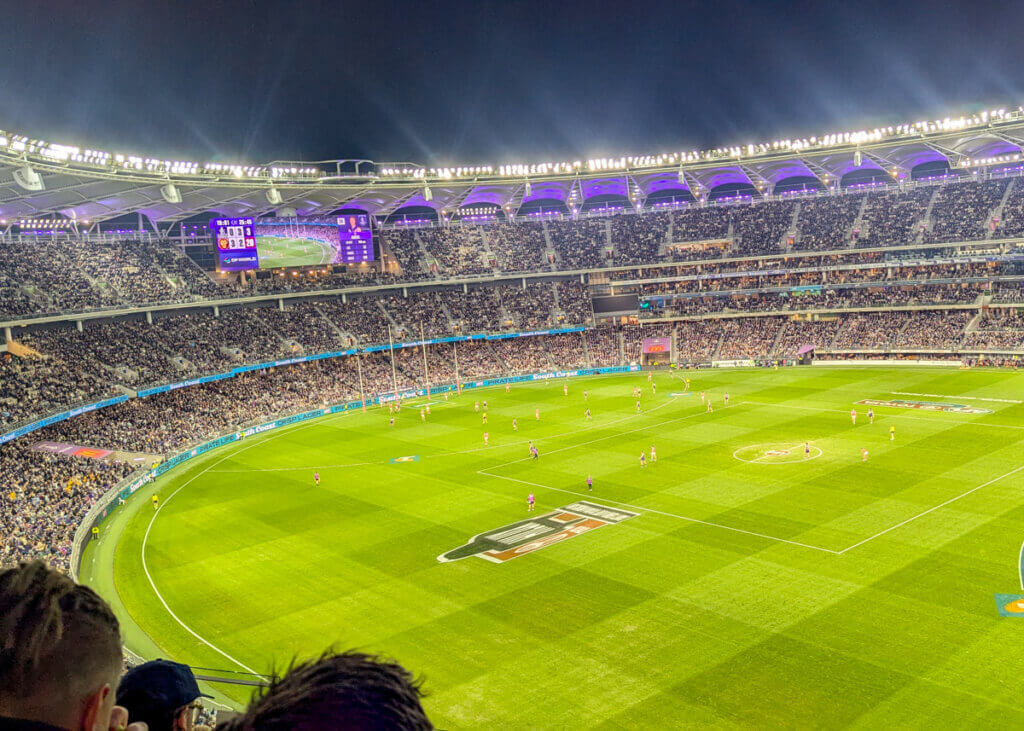
It’s the longest drive of the trip back to Perth from Esperance. Allow 8 hours, plus a stop at Wave Rock near Hyden (conveniently halfway).
In Perth, we chose a more central hotel within walking distance of Optus Stadium, as we had tickets for a Fremantle Dockers AFL game (highly recommend if there’s a match on).
On our final day, we enjoyed a stroll around King’s Park with final views of the city, followed by a nostalgic lunch at Little Creatures in Fremantle before heading to the airport.
You may also like to read:
10 AMAZING things to do in Perth with kids
Coral Bay without the tours: is it worth it for families?
Cheela Plains Station: wilderness camping in Western Australia

